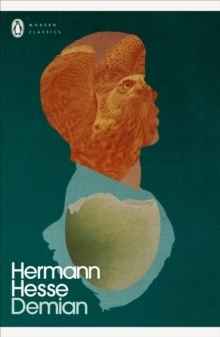Demian

Editorial Penguin UK
Fecha de edición septiembre 2017 · Edición nº 1
Idioma inglés
EAN 9780241307434
144 páginas
Libro
encuadernado en tapa blanda
Dimensiones 138 mm x 200 mm
Resumen del libro
Demian is a coming-of-age story that follows a young boy's maturation as he grapples with good and evil, lightness and darkness, and forges alternatives to the ever-present corruption and suffering that he sees all around him. Crucial to this development are his relationships with a series of older mentors, of who the titular Demian is the most charismatic, otherworldly and ultimately influential. Many have noted the influence of Jungian psychology upon this novel and it is fascinating to see Herman Hesse's interests in the self, existence and free will play out through through the lens of early twentieth-century Europe; Christian imagery and themes are ever-present, as is the shadow of the First World War.
Biografía del autor
x{0026}lt;P x{0026}lt;B Hermann Hessex{0026}lt;/B (1877-1962), novelista y poeta alemán, nacionalizado suizo. Premio Nobel de Literatura en 1946, es una figura de culto en el mundo occidental por su celebración del misticismo oriental y la búsqueda del propio yo, muy influenciado por el psicoanálisis junguiano. Abandonó pronto la escuela y fue autodidacta a base de numerosas lecturas. La desesperanza y la desilusión que le produjeron la Primera Guerra Mundial y una serie de tragedias domésticas, y sus intentos por encontrar soluciones, se convirtieron en el asunto de su posterior obra novelística. Sus escritos se fueron enfocando hacia la búsqueda espiritual de nuevos objetivos y valores que sustituyeran a los tradicionales, que ya no eran válidos. Es autor de varias novelas como x{0026}lt;I Peter Camenzindx{0026}lt;/I (1904), x{0026}lt;I Bajo las ruedasx{0026}lt;/I (1906), x{0026}lt;I Demian x{0026}lt;/I (1919), x{0026}lt;I Viaje al Estex{0026}lt;/I (1932), x{0026}lt;I Siddhartha x{0026}lt;/I (1922), x{0026}lt;I El lobo estepariox{0026}lt;/I (1927), quizá su novela más innovadora, x{0026}lt;I Narciso y Goldmundox{0026}lt;/I (1930) y x{0026}lt;I El juego de abaloriosx{0026}lt;/I (1943), que cada vez se hicieron más simbólicas y cercanas al psicoanálisis.x{0026}lt;/P








